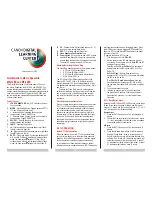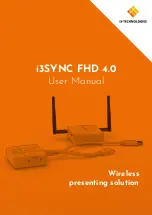
Landscape
—For scenes with deep perspective, such as mountain scenes.
Portrait
—For pictures that have one or more people as their primary subject.
Action
—For capturing sporting events, moving cars, or any scene where you
want to stop the action.
Night Portrait
—For capturing images of people at night. This mode uses the
flash and a long exposure. As a result, you must set the camera on a tripod
or stable surface.
Beach and Snow
—For capturing scenes against bright backgrounds such as
at the beach or in snow.
Sunset
—For capturing outdoor scenes at sunset.
Burst
—For taking two or more shots quickly in succession (see
Using the
Burst mode
on page 17
).
Macro
—For taking close-up pictures of subjects between 100 and 800 mm
(3.9 to 31.5 in) away.
Note
The shooting modes do not apply when you are recording video clips.
The shooting mode remains in effect until it is changed again, or until you turn off the
camera.
Using the Self-Timer mode
The Self-Timer allows you to take an image or video clip 10 seconds after pressing
the
Shutter
or
Video
button.
1.
Press
while in
Live View
, use
to highlight
Self-Timer
, then press
.
2.
Set the camera on a tripod or stable surface.
3.
Frame the subject in the Image Display.
4.
The next steps depend on whether you are taking a still pictures or recording a video
clip.
a.
For still pictures, press the
Shutter
button halfway down to lock focus and
exposure. When the focus brackets turn green, press the
Shutter
button all the
way down.
b.
For video clips, press the
Video
button, then release it.
5.
The camera begins the 10-second countdown, then takes the still image or begins
recording the video clip.
6.
If you are recording a video clip, press the
Video
button to stop recording.
Tip
If you want to include yourself in the picture, press the
Shutter
button all the
way down, then place the camera on a tripod or stable surface. The camera locks
focus and exposure just before the end of the countdown, allowing you time to
place yourself in the scene.
Chapter 2
(continued)
16















































